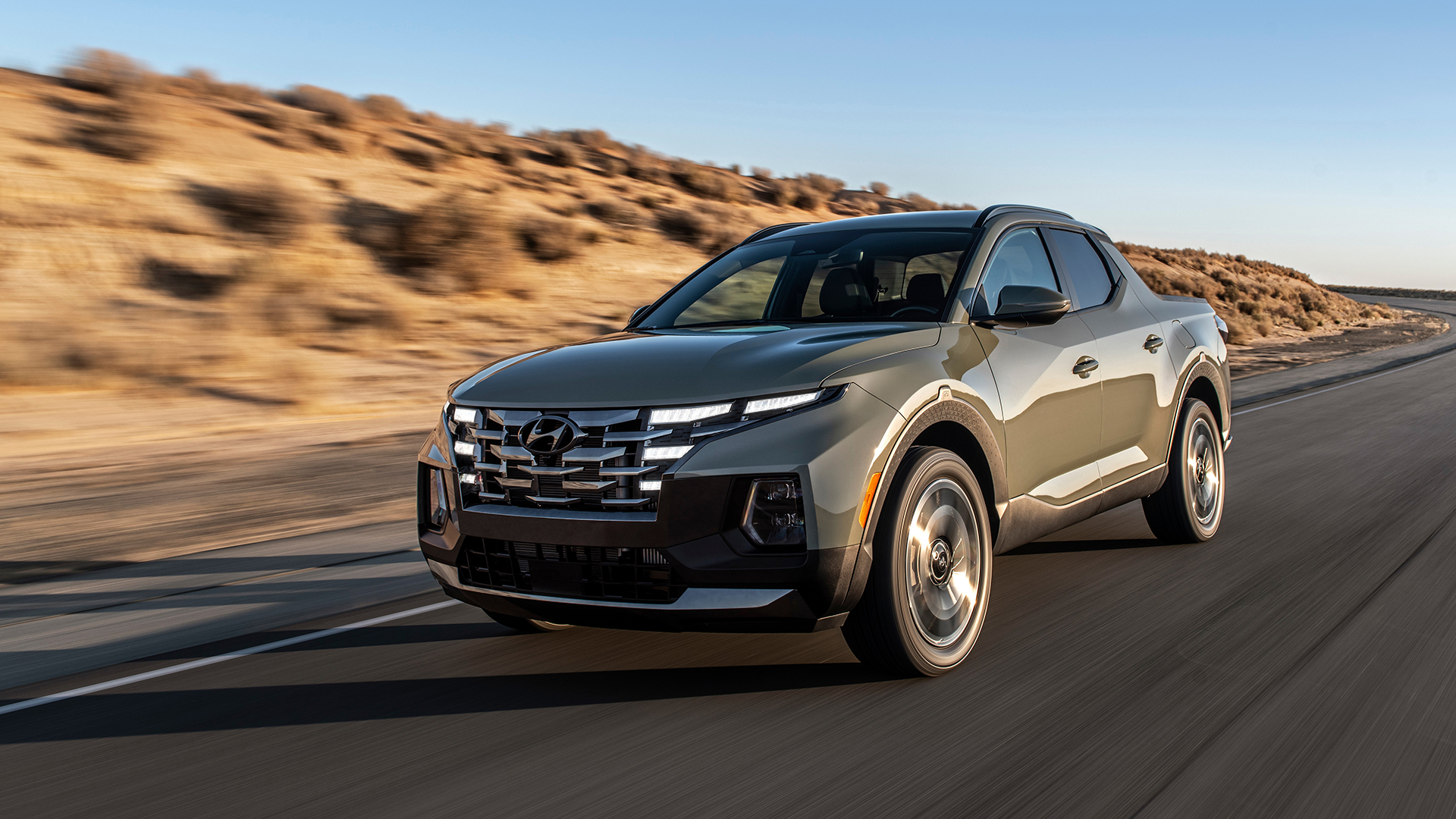

Despite Hyundai refusing to call the all-new 2022 Santa Cruz a pickup truck and equipping it with a rather modest four-foot bed, consumers will always call it that. And that’s okay because it can certainly do real truck things like hauling supplies for your latest home renovation, going off the beaten path, and towing a decent-sized trailer.
As it turns out, even though the Santa Cruz shares a platform with the humble Tucson crossover, the Sport Adventure Vehicle (as Hyundai calls it) has quite a number of physical features that set it apart from the compact family-hauler. When all of those important details are factored in, the Santa Cruz can tow a rather robust 5,000 pounds.

Admittedly, that’s pretty dang good for a vehicle of the Santa Cruz’s stature. Sure, it’s no Chevy Colorado or Ford Ranger (which are rated as high as 7,000 and 7,500 pounds, respectively), but its rating is more than, say, a Jeep Gladiator Rubicon can offer. In fact, it ties the towing limit of the Honda Ridgeline and even the Toyota 4Runner, both of which are taller and wider than the Santa Cruz. So just how did Hyundai do it?
To know more about this, we spoke with Trevor Lai, manager of product planning and SUVs at Hyundai. According to him, there are quite a few ways Hyundai was able to increase the towing capacity without moving to a larger platform.
For starters, the Santa Cruz has a wheelbase of 118.3 inches. While that’s considerably shorter than the Honda Ridgeline and Ford Ranger, it’s almost 13 inches longer than the Tucson’s. A longer wheelbase allows for more overall stability and lessens the likelihood that the weight of the trailer will lift the vehicle’s front end with a heavy load.

Lai also told The Drive that the Santa Cruz’s underpinnings are substantially beefier, and they actually have a lot more in common with the larger Santa Fe. While the exact details are still under wraps, Lai stresses that the decision to build the Santa Cruz on the Tucson architecture was made to ensure it stands out in the newly-coined Sport Adventure Vehicle segment. Because of its standard self-leveling, multi-link rear suspension, it still touts the ride height and comfortable driving experience of a crossover.
Of course, the drivetrain plays a huge part in increasing the towing capacity, too. Unlike the Tucson, which offers a maximum of 181 horsepower and 175 pound-feet of torque from its naturally aspirated 2.4-liter, the Santa Cruz offers an optional 2.5-liter, turbo four. This brings with it an estimated 275 hp and 310 pound-feet of torque; without the turbo power plant, the Santa Cruz’s towing capacity drops to 3,500 pounds.
Hyundai also ditched the Tucson’s six-speed automatic in favor of an eight-speed dual-clutch with optional all-wheel-drive pulled from elsewhere in its lineup. To cope with the added stress of towing, the transmission has been reworked with shorter gears to keep all the mechanicals happy. Thermal concerns were also addressed, according to Lai, as DCTs are sometimes known for creating extra heat in off-road and towing scenarios.

In short, the Santa Cruz packs a ton of potential, especially for being America’s smallest new truck. It might not have the largest bed or highest engine displacement in neighboring segments, but what it lacks in those departments, it makes up for with uniqueness and, evidently, towing capacity.
Customers will be able to reserve their own 2022 Hyundai Santa Cruz later this month. While Hyundai doesn’t give an exact launch date, we expect to see the vehicle hit dealer lots later this summer.
Got a tip or question for the author? You can reach them here: Rob@thedrive.com